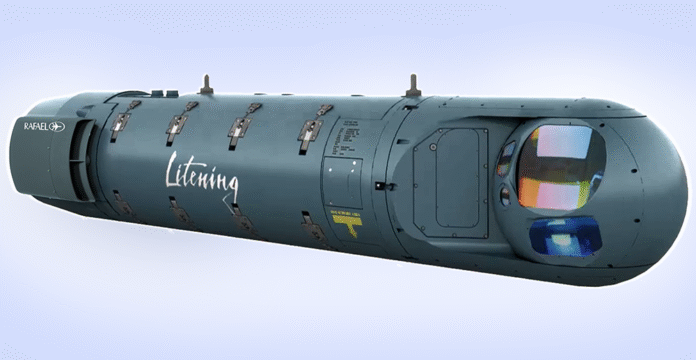Tel Aviv: The German parliament has authorised the procurement of 90 Rafael Litening 5 targeting pods for its Eurofighter Typhoon fleet, enhancing the precision strike and reconnaissance capabilities of the Bundeswehr.
According to the Israeli company Rafael, the decision reflects Germany’s confidence in Rafael’s systems and continues a decades-long defence partnership. It also aligns with a broader NATO trend emphasising multi-wavelength sensor integration and stand-off targeting effectiveness in contested airspaces.
Litening 5 is a fifth-generation targeting system already operational with 28 air forces worldwide. With more than 2,000 units delivered and over 2.2 million operational flight hours—primarily during contingency operations—it has become one of the most widely used targeting pods in service today.
The pod’s sensor suite includes mid-wave and short-wave infrared, high-resolution color imaging, and dual-wave length laser designation, with an optional synthetic aperture radar (SAR) for wide-area, all-weather imaging. This enables long-range detection, recognition, and identification of targets under varied atmospheric conditions.
Litening 5 supports both air-to-ground and air-to-air missions, including ground moving target indication, multi-target tracking, and automatic target recognition. For air-to-air operations, it enhances target identification at range, supports detection of low-RCS threats, and provides missile cueing when integrated with the host platform. It also offers capabilities for detecting and engaging unmanned aerial vehicles (UAVs), supporting operational flexibility against diverse threats.
Litening 5 has been integrated on over 26 aircraft types, including F-15, F-16, Gripen, A-10, Mirage 2000, Embraer, and Eurofighter. It is compatible with laser, GPS, and image-guided munitions and includes real-time datalink capability across Ku, C, and L bands.
Rafael says that Germany’s move from Litening 3 to Litening 5 reflects both satisfaction with system performance and the Bundeswehr’s emphasis on improved precision, survivability, and future growth potential. “This mirrors a wider European trend of upgrading existing fleets through advanced sensors rather than relying solely on new platforms,” a company spokesman said.






